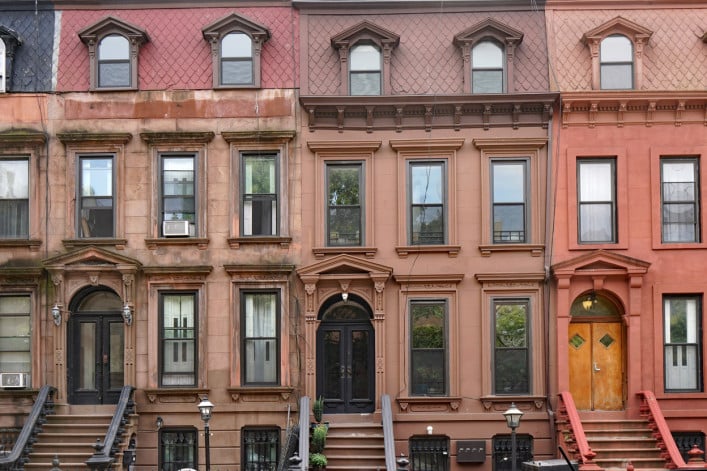How to reduce your capital gains tax when selling your NYC co-op, condo, or brownstone
- If you own a condo or co-op you can factor in your contributions to capital improvements in the building
- Furniture or art that you rent for staging, or painting to sell the apartment could also be a deduction

One way to offset capital gains tax is through capital improvements, or major renovations to your brownstone.
iStock
If you plan on selling your apartment or brownstone in New York City, you’ll want to consider ways to reduce your tax exposure.
Capital gains tax is levied on the profit you make selling your place and it varies depending on your income bracket. Some won't pay any tax at all: If the apartment you are selling is your primary residence and you have lived there for at least the last two years or two of the last five years, you won’t have to pay capital gains tax on the first $250,000 of your profit if you're single or $500,000 if you are married.
[Editor's note: A previous version of this article ran in March 2022. We are presenting it again with updated information for February 2025.]
For NYC's higher-priced properties, it’s very possible you would have capital gains in excess of those figures. How can you offset those gains to pay less tax.
Major apartment upgrades can be deducted
One way of offsetting capital gains is through capital improvements—so if you’ve made substantial renovations to your apartment or there have been major upgrades to the building, you can add these costs to what’s called your basis—the original purchase price of your apartment. This reduces your profit when you sell.
“You can increase your basis and lower your tax by making capital investments to your property so if you remodel your bathroom that’s deductible,” said Asher Rubinstein, a partner at Gallet Dreyer & Berkey with a focus on estate and tax planning. For example, if you spent $100,000 upgrading the bathroom or kitchen of the apartment you bought for $1,000,000 in 2010, your basis increases by the amount of that improvement.
“It is a capital improvement and you’ve lowered the corresponding tax,” Rubinstein said.
A new fridge or new appliances aren't capital improvements and neither are regular repairs—like painting or new carpeting you’ve installed over the years.
Deductions can include building-wide improvements
If you own a condo or co-op, you can also factor in your contributions to capital improvements in the building.
“The building passes the cost of those improvements on to the unit holders, so if the building does repair work on the roof or facade, when it comes time to calculate your improvements that also applies to the building as well,” he said.
You can get this information from the building management, but if the work was done a decade ago they may not have this readily available.
“It’s best that the owner keeps contemporaneous records because even if you sell it in a decade, if the IRS challenges any of those deductions it’s good to have it on file,” Rubinstein said.
The costs of selling your place can be deducted
Another deduction is the staging or paint work carried out in order to sell your place—what Rubinstein called “the cost of the sale.”
“Improvements necessary to show the apartment like staging, furniture or art that you rent for staging, or painting that you do in order to sell the apartment could also be a deduction for the sale,” Rubinstein said. He added that the commission you pay the agent can also be deducted.
A further deduction you can take is the closing cost from when you first purchased the apartment.
A charitable option if you’re not living in the apartment
If you are no longer living in your apartment, Rubinstein points out there’s a mechanism called a charitable remainder trust where tax is avoided through a commitment to give a charitable donation at the end of the trust term. This would typically work for townhouses rather than co-ops and condos. Rubinstein said you have to consider the value of the property or item going into trust, the expected appreciation, and the lifespan of the trust.
“We can then calculate how much the taxpayer can pull out in distributions each year as a beneficiary and so long as there’s 10 percent left for the approved charitable beneficiary, the trust won’t pay tax,” Rubinstein said.
—Earlier versions of this article contained reporting and writing by Alanna Schubach and Emily Myers.
You Might Also Like





























